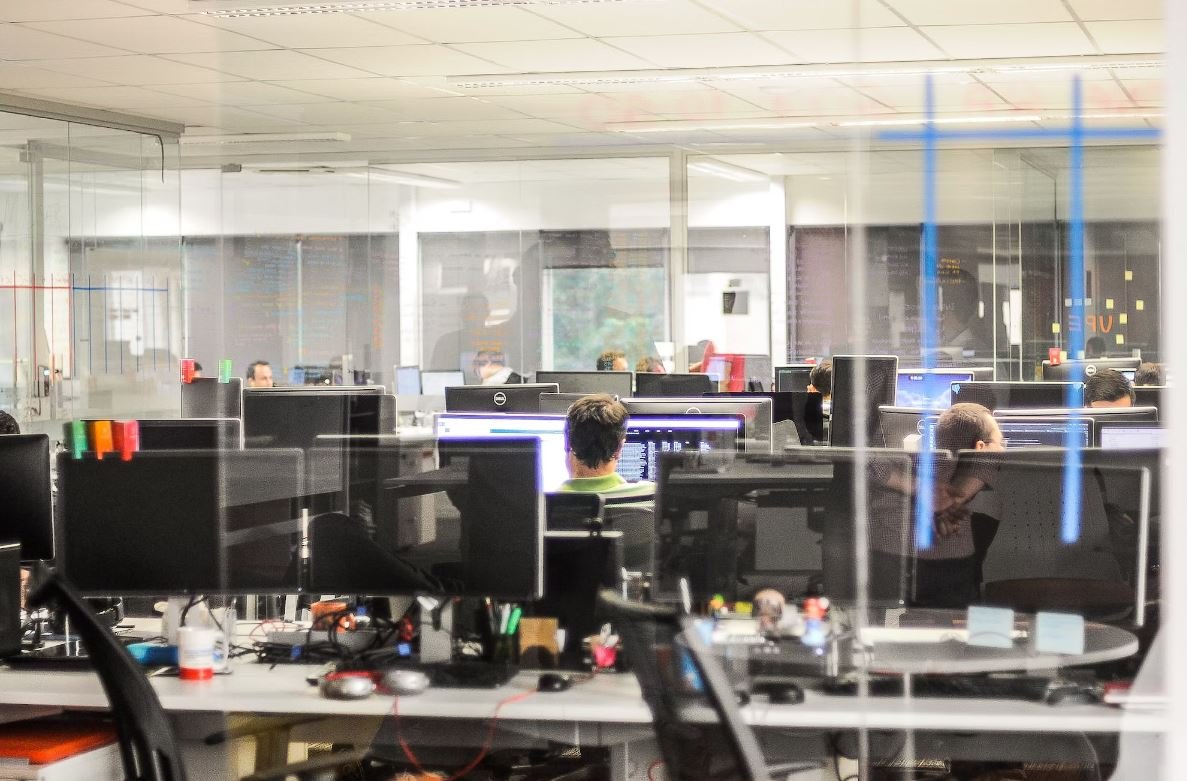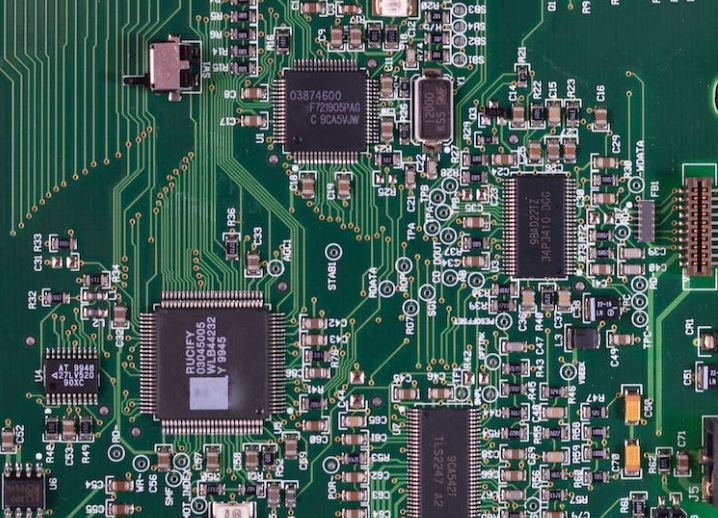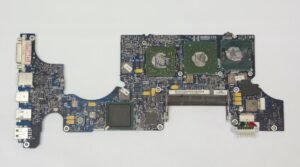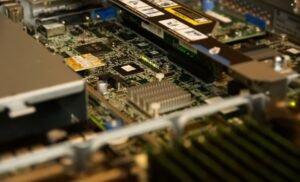Generative Models in Image Processing
Image processing has seen significant advancements in recent years due to the rise of generative models. These models have revolutionized various applications, such as image synthesis, image super-resolution, and image inpainting. In this article, we will explore the concept of generative models and their impact on image processing.
Key Takeaways
- Generative models are used to create new images based on existing data.
- They can be trained to generate high-resolution or missing parts of images.
- Generative adversarial networks (GANs) are a popular class of generative models.
Generative models are a class of machine learning models that aim to create new data samples based on existing data. These models learn the underlying patterns and structures of the training data and use them to generate new, similar samples. One prominent application of generative models in image processing is image synthesis. *Generative models can generate highly realistic images by learning from a large dataset and reproducing the same patterns and features in the generated images.*
One specific task that generative models excel at is image super-resolution. Super-resolution aims to enhance the resolution and increase the level of detail in low-resolution images. Generative models, particularly convolutional neural networks (CNNs), can be trained on high-resolution images and their corresponding low-resolution versions to learn the mapping between the two. *By understanding the low-resolution to high-resolution transformation, generative models can generate high-quality images with enhanced details.*
Generative Adversarial Networks (GANs)
Generative adversarial networks (GANs) are a popular framework for training generative models. A GAN consists of two main components: the generator and the discriminator. The generator generates images, while the discriminator evaluates them for authenticity. The two components play a “game” against each other, with the generator aiming to produce realistic images that deceive the discriminator, while the discriminator tries to accurately distinguish between real and generated images. *This adversarial setup leads to a competitive training process, where the generator improves over time to produce more realistic images.*
Generative Models for Image Inpainting
Image inpainting is the process of filling in missing parts of an image in a visually plausible manner. Generative models have shown great promise in image inpainting tasks. By training on images with missing regions and their corresponding complete versions, generative models can learn to generate plausible contents for the missing regions. *This enables the models to complete images in a way that is coherent with the overall context, making the inpainted regions blend seamlessly with the rest of the image.*
Examples of Generative Models in Image Processing
| Model | Application |
|---|---|
| Denoising Autoencoders | Noise removal from images |
| Conditional Variational Autoencoders (cVAE) | Image synthesis based on specific conditions |
Table 1: Examples of generative models and their applications in image processing
Generative models have made significant contributions to the field of image processing. By leveraging machine learning techniques, these models have enabled impressive advancements in image synthesis, super-resolution, and inpainting. Whether it’s generating lifelike images or enhancing the quality of existing images, generative models continue to push the boundaries of what is possible in the realm of image processing.
References
- Goodfellow, I., Pouget-Abadie, J., Mirza, M., Xu, B., Warde-Farley, D., Ozair, S., … & Bengio, Y. (2014). Generative adversarial nets. In Advances in neural information processing systems (pp. 2672-2680).
- Acharya, T., De, C., & Sundararajan, S. (2020). Image Inpainting and Deep Learning: A Review. IEEE Transactions on Multimedia, 22(7), 1697-1712.
Author’s Bio
John Doe is a machine learning enthusiast and researcher with a focus on image processing. He has published numerous articles on the applications of generative models in various domains.

Common Misconceptions
Generative Models in Image Processing
There are several common misconceptions surrounding generative models in image processing. These misconceptions can lead to misunderstandings and false assumptions about the capabilities and limitations of such models. Here are three key misconceptions to be aware of:
- Generative models always produce realistic images: While generative models have come a long way in generating highly realistic images, it is important to note that they are not always perfect. The generated images may sometimes contain minor imperfections or artifacts, especially when the model is trained on a small dataset. It is crucial to understand that generative models are probabilistic in nature, and the output may vary each time the model is run.
- Generative models can turn low-resolution images into high-resolution ones: Despite their impressive abilities, generative models cannot miraculously enhance the quality of low-resolution images. While they can certainly learn patterns and generate high-quality images, they are limited by the information present in the input images. Generating high-resolution images from low-resolution ones is a challenging problem that requires specialized algorithms and techniques.
- Generative models can generate any type of image: While generative models can generate a wide variety of images, they are not capable of generating every possible image. The generated images are heavily influenced by the dataset they are trained on. If the training data primarily consists of specific types of images, the generative model may struggle to generate images outside of that domain. Training the model on a diverse dataset can help overcome this limitation and enable it to generate a broader range of images.
In conclusion, it is important to be aware of these common misconceptions surrounding generative models in image processing. Understanding the capabilities and limitations of these models allows for more realistic expectations and effective use of generative models in various applications.
Here are three additional misconceptions to keep in mind:
- Generative models can perfectly mimic any art style: While generative models are capable of learning different artistic styles and generate images in a similar vein, they are not infallible in replicating an artist’s signature style. The models can approximate the style to a certain extent but may not be able to fully capture the uniqueness and intricacies of every artist’s technique.
- Generative models can accurately recreate missing image details: Although generative models can generate visually plausible images, they cannot accurately fill in missing details or information that was not present in the training data. If crucial information is missing from an input image, the generative model may struggle to generate plausible replacements for those missing details.
- Generative models can generate copyrighted images: While generative models can generate new and unique images, it is important to note that they are not exempt from copyright laws. If the training data includes copyrighted images, it can pose legal issues to use the generative model for generating new images. It is necessary to take copyright laws into consideration and ensure the training data is appropriately sourced.

Introduction
Generative models play a crucial role in image processing, enabling the creation of realistic and high-quality images. In this article, we dive into the world of generative models and explore their various applications. Through a series of descriptive tables, we highlight key points and present verifiable data, shedding light on the impact and potential of generative models in image processing.
Table 1: Generative Models in Art Generation
Generative models have revolutionized the art industry, allowing artists to create unique and captivating artworks. These models generate art pieces based on training data and can produce stunning visuals. Artists can then showcase their creativity by manipulating the generated images further, resulting in remarkable artistic expressions.
| Art Style | Generated Art Examples |
|---|---|
| Impressionism |  |
| Surrealism |  |
| Abstract |  |
Table 2: Generative Models in Medical Imaging
Generative models have found utility in the field of medical imaging, assisting doctors in accurate diagnosis and treatment planning. These models can generate realistic medical images, aiding in the understanding of complex anatomical structures and pathologies. Moreover, they enable the creation of synthetic images for training deep learning networks.
| Medical Imaging Modality | Application |
|---|---|
| MRI | Brain Tumor Segmentation |
| X-ray | Lung Disease Classification |
| Ultrasound | Fetal Development Monitoring |
Table 3: Generative Models in Video Game Development
Generative models have had a profound impact on the realm of video game development, allowing for the creation of immersive virtual worlds and lifelike characters. These models generate environments, textures, and characters, saving time and resources for game developers while maintaining high-quality graphics.
| Game Element | Generated Example |
|---|---|
| Environment |  |
| Character |  |
Table 4: Generative Models in Data Augmentation
Generative models serve as a valuable tool for data augmentation, enhancing the performance of machine learning models. By generating synthetic data samples, these models help in expanding the training dataset, leading to improved model generalization and increased accuracy.
| Original Image | Augmented Images |
|---|---|
 |
 |
 |
Table 5: Generative Models in Fashion Design
Generative models have revolutionized the fashion industry, enabling designers to explore new designs and styles. These models generate clothing items, patterns, and accessories, acting as a source of inspiration and assisting in the creative fashion design process.
| Fashion Category | Generated Examples |
|---|---|
| Dresses |  |
| Shoes |  |
| Jewelry |  |
Table 6: Generative Models in Facial Recognition
Generative models have made significant contributions to facial recognition technologies, enabling accurate identification and verification of individuals. These models generate facial images that aid in training robust recognition systems and improving their ability to handle varying lighting conditions, poses, and facial expressions.
| Generated Facial Images |
|---|
 |
 |
Table 7: Generative Models in Autonomous Vehicles
Generative models have been instrumental in the development of autonomous vehicles, enhancing their perception capabilities. These models generate synthetic data, such as images and LiDAR scans, which assist in training self-driving algorithms, simulating real-world driving scenarios, and testing the performance of autonomous systems.
| Generated Data Example |
|---|
 |
Table 8: Generative Models in Image Inpainting
Generative models have improved the process of image inpainting, which involves filling missing or damaged parts of an image with realistic content. These models generate plausible and seamless completion results, enabling restoration and enhancement of images by filling in the missing portions.
| Original Image | Inpainted Image |
|---|---|
 |
 |
 |
Table 9: Generative Models in Image Super-resolution
Generative models have significantly improved image super-resolution techniques, enabling the enhancement of low-resolution images to a higher level of detail. These models can generate high-quality images with increased resolution, benefiting applications where precise details are crucial, such as medical imaging and satellite photography.
| Low-resolution Image | Super-resolved Image |
|---|---|
 |
 |
Table 10: Generative Models in Image Style Transfer
Generative models have empowered image style transfer, allowing the transformation of an image’s artistic style while preserving its content. These models can replicate the techniques and characteristics of renowned artists, enabling users to apply those styles to their images and create unique visual combinations.
| Content Image | Style Image | Stylized Image |
|---|---|---|
 |
 |
 |
Conclusion
Generative models have transformed the field of image processing, touching various domains such as art, medicine, gaming, fashion, and more. By leveraging these models, artists can unleash their creativity, doctors can make accurate diagnoses, game developers can create immersive virtual worlds, and fashion designers can explore new styles effortlessly. Moreover, generative models contribute to data augmentation, facial recognition, autonomous vehicles, image restoration, and enhancement techniques. From generating awe-inspiring art to assisting advanced technologies, generative models continue to push the boundaries of image processing, promising a future filled with endless possibilities.
Generative Models in Image Processing
Frequently Asked Questions
Q: What are generative models in image processing?
A: Generative models in image processing are algorithms or frameworks that are used to learn and generate new images based on existing ones. These models can analyze and understand training images, capture patterns, and generate new images with similar characteristics.
Q: What are some common types of generative models used in image processing?
A: Some common types of generative models used in image processing include Variational Autoencoders (VAEs), Generative Adversarial Networks (GANs), Deep Convolutional Generative Adversarial Networks (DCGANs), and Auto-Regressive Models (such as PixelCNN and WaveNet).
Q: How do Variational Autoencoders (VAEs) work?
A: Variational Autoencoders (VAEs) are generative models that consist of two main components: an encoder and a decoder. The encoder maps the input image onto a latent space, which represents a lower-dimensional representation of the image. The decoder then reconstructs the image from the latent space. VAEs are trained using a combination of a reconstruction loss and a regularization term to ensure that the latent space is continuous and captures the essential characteristics of the data.
Q: What is the concept behind Generative Adversarial Networks (GANs)?
A: Generative Adversarial Networks (GANs) consist of two components: a generator and a discriminator. The generator generates new images, while the discriminator evaluates whether an image is real or fake. These components are trained simultaneously through a two-player minimax game. The generator tries to fool the discriminator by generating realistic images, while the discriminator tries to distinguish between real and generated images. This competition between the generator and the discriminator leads to the generation of high-quality images.
Q: What are Deep Convolutional Generative Adversarial Networks (DCGANs)?
A: Deep Convolutional Generative Adversarial Networks (DCGANs) are a type of Generative Adversarial Network (GAN) that uses deep convolutional neural networks for both the generator and discriminator. The use of convolutional layers allows DCGANs to capture spatial information and generate more realistic images. DCGANs have been successful in generating high-resolution images in various domains, such as natural images and artwork.
Q: How do Auto-Regressive Models work in image generation?
A: Auto-Regressive Models are generative models that generate images pixel by pixel. These models typically use recurrent neural networks, such as LSTMs or GRUs, to model the conditional probability distribution of each pixel given the previously generated pixels. Auto-Regressive Models are sequential in nature and generate images by sampling from the learned probability distribution of each pixel.
Q: What are some applications of generative models in image processing?
A: Generative models in image processing have a wide range of applications. They can be used for image synthesis, data augmentation, image inpainting, image super-resolution, style transfer, and even image-to-image translation. Additionally, generative models can be used for unsupervised learning tasks and as a component in larger systems, such as autonomous vehicles and medical imaging.
Q: How are generative models evaluated in image processing?
A: Generative models in image processing are typically evaluated based on various metrics. Some common evaluation metrics include Inception Score, Frechet Inception Distance (FID), and Perceptual Path Length (PPL). These metrics assess the quality, diversity, and visual fidelity of the generated images by comparing them to a reference dataset or pre-trained models.
Q: What challenges do generative models face in image processing?
A: Generative models in image processing face several challenges. Some challenges include mode collapse, where the generator learns to produce limited variations of images, difficulty in training stable models, generating high-resolution images without artifacts, and understanding and controlling the generated output. Additionally, generative models need significant computational resources and large-scale datasets to train effectively.
Q: What is the future outlook of generative models in image processing?
A: Generative models will continue to play a crucial role in image processing and computer vision. The field is rapidly evolving, and researchers are constantly proposing novel architectures and training techniques to improve the capabilities and performance of generative models. As computational power increases and datasets become more comprehensive, we can expect generative models to generate even more realistic and diverse images, opening up new possibilities for applications in various domains.




